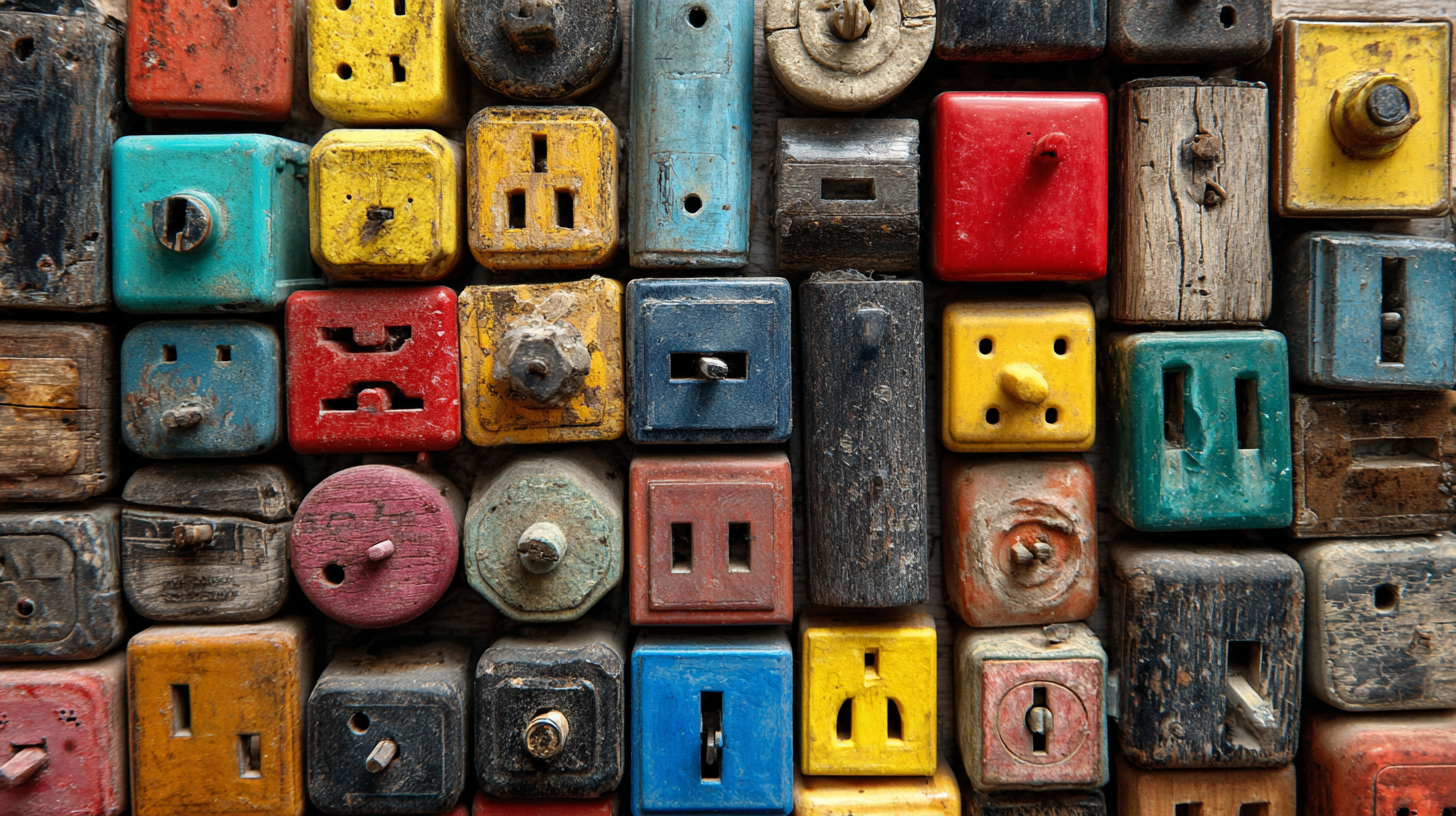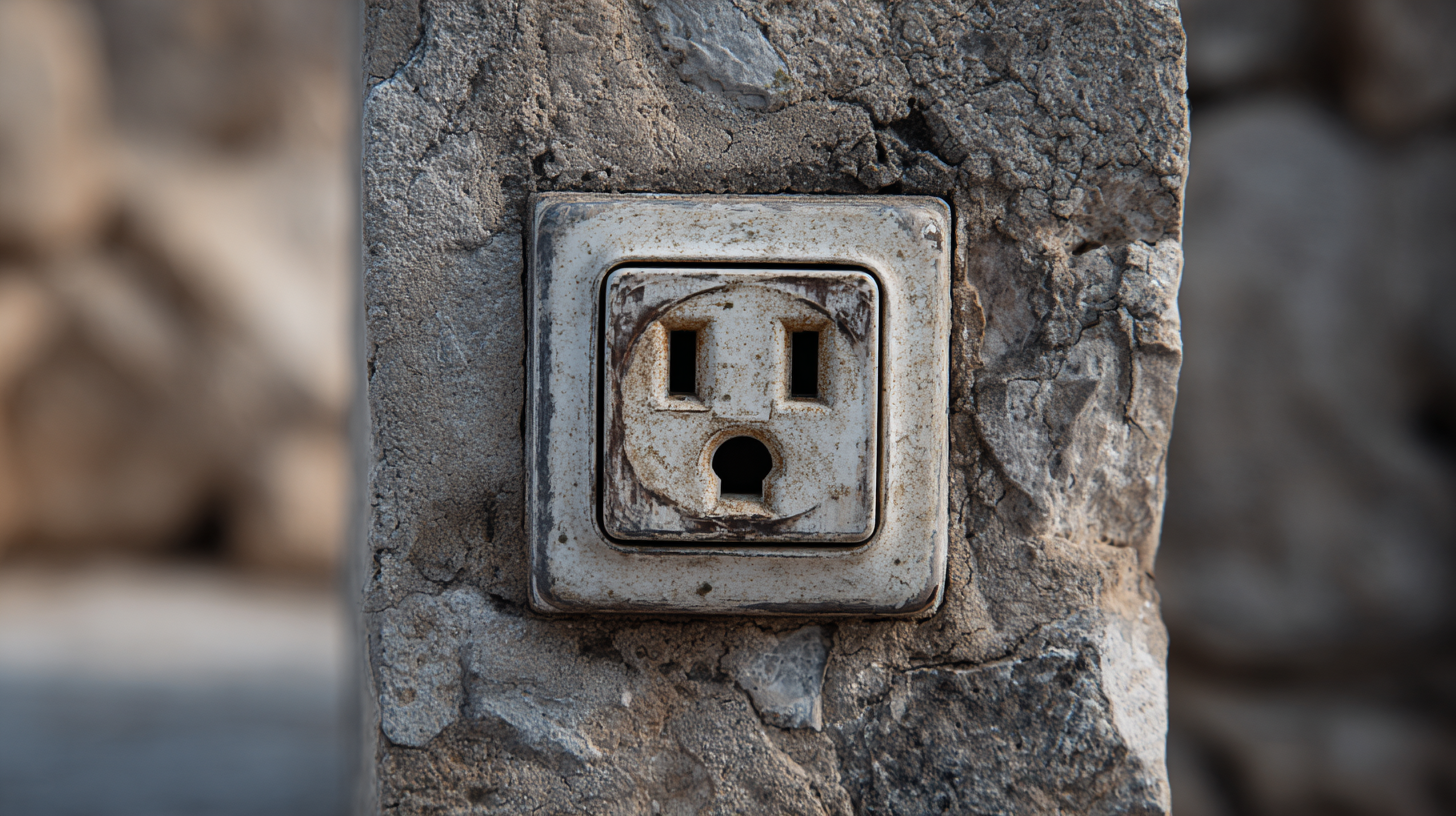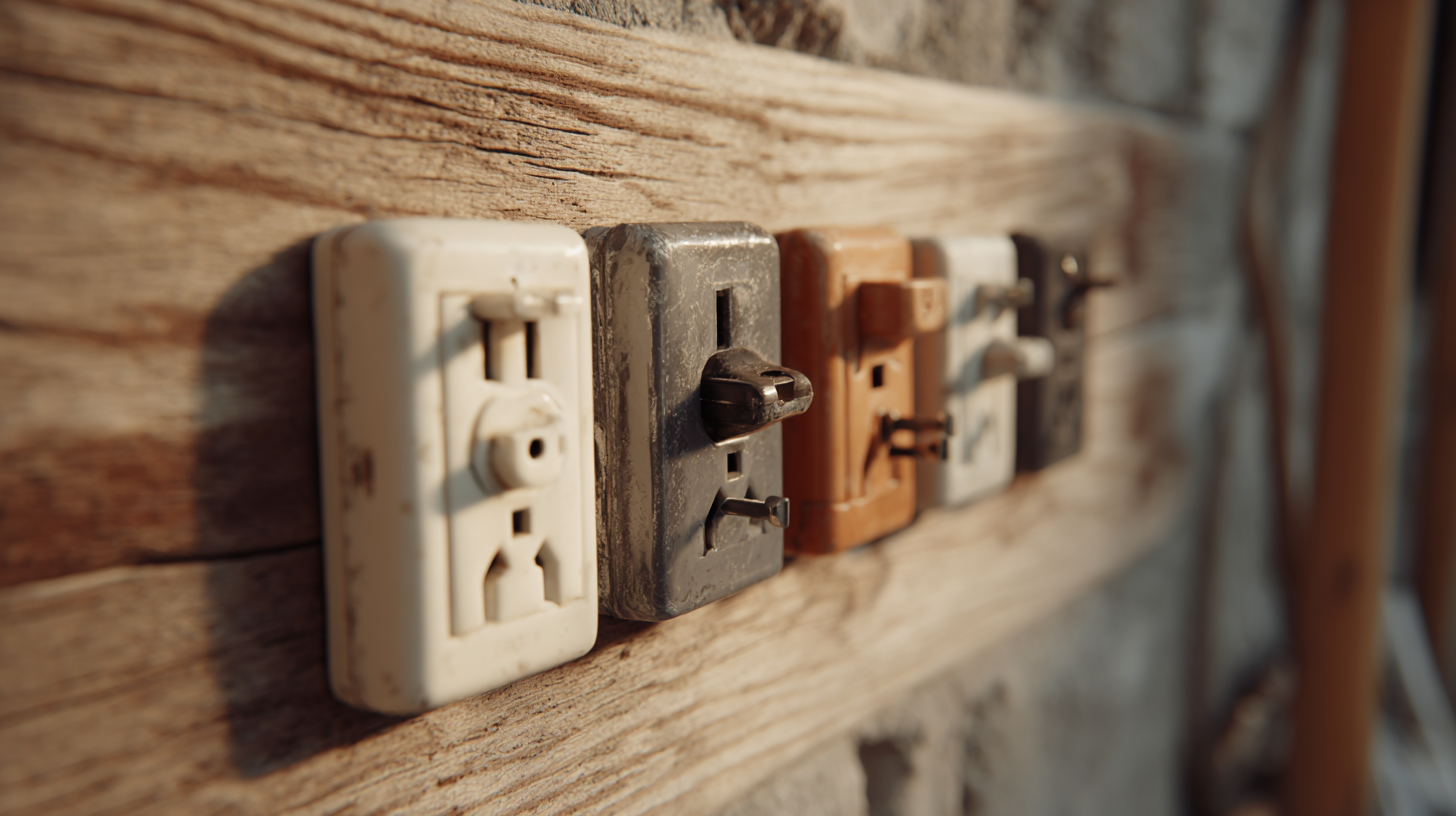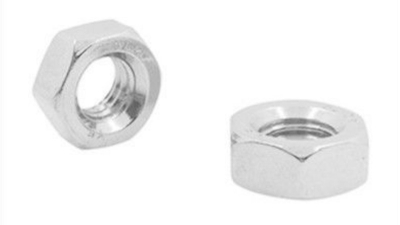
- wzqb@qb-inds.com
- Mon - Sat at 7:00AM to 6:00PM
The Ultimate Guide to Wall Plugs: Choosing the Right Type for Your Projects
Table of Contents
- Understanding Different Types of Wall Plugs and Their Unique Benefits
- How to Choose the Right Wall Plug for Different Material Types
- Comparative Analysis of Plastic and Metal Wall Plugs
- Maximizing Strength: Load Ratings of Various Wall Plug Types
- Common Mistakes When Choosing Wall Plugs and How to Avoid Them
- Tips for Proper Installation of Wall Plugs for Optimal Performance
- Maximizing Durability and Performance: The Essential Guide to Stainless Steel DIN934 Hexagon Nuts
- FAQS
- Conclusion
- Related Posts
In today’s fast-changing world of construction and manufacturing, picking the right components can really make or break your project’s success. One often-overlooked part is the Wall Plug. These small fittings might seem simple, but they play a crucial role in securing screws or fixtures to walls — and honestly, knowing the different types can make all the difference when it comes to lasting, stable installations.

At Wenzhou Qiangbang Industrial Co., Ltd., we’ve been around since 2003, and our main goal is to deliver smart, tailored solutions for top-tier manufacturing needs. We’re all about research, development, quality, and great service — so you can trust we’ve got the best Wall Plugs to match your projects. This guide is here to walk you through the ins and outs of Wall Plugs, giving you the knowledge you need to make smarter choices and boost your success.
Understanding Different Types of Wall Plugs and Their Unique Benefits
When you're diving into home improvement projects, it’s pretty important to get a good handle on the different types of wall plugs out there. You know, those little anchors? They actually come in a bunch of varieties, each suited for specific jobs and wall materials. For example, the plastic expansion plug works really well for hollow walls and can handle light to medium stuff—like hanging a small shelf or picture. But if you're planning on hanging something heavier, like a big frame or shelves, metal anchors are the way to go—they’re much stronger. Some industry reports even say that choosing the right wall plug can boost how much weight it can support by up to 50%. That’s a pretty big deal when you're trying to avoid disasters down the line!

A couple of quick tips: Always make sure you pick the right wall plug for what you’re hanging. For heavier items, toggle bolts are a lifesaver—they grip drywall really well. Also, don’t forget to check what kind of wall you’re working with—whether it’s brick, concrete, or drywall—since that influences what kind of anchor you should use and how to install it.
And here’s something else to keep in mind: the type of wall plugs can actually affect how long your installation lasts. For example, nylon plugs are better suited for outdoor use because they resist moisture and UV damage about 30% more effectively than the classic plastic ones. So, always go for good quality plugs that fit nice and snug into your pre-drilled holes—this way, your stuff stays secure and stable longer, no matter what project you're working on.
How to Choose the Right Wall Plug for Different Material Types
When you're diving into any construction or DIY project, picking the right wall plug can really make a difference. It’s one of those things that might seem small but actually plays a huge role in how well your stuff stays put and lasts over time. Different wall materials call for different types of wall plugs—like, if you’re working with brick or concrete, a traditional expansion plug works pretty well. But if you're hanging something heavier on drywall, you might need a toggle bolt or a molly bolt to keep everything secure.
Interestingly, recent reports show that the global market for building materials is on the rise, with an expected growth rate of 3.7% annually. That basically means people are getting more interested in quality hardware, including those tiny wall plugs that make everything hold up nicely.
A quick tip—think about what you're hanging and what the wall is made of. Heavy stuff on concrete or brick needs heavy-duty wall plugs for sure, whereas lighter things on drywall might just need some simple plastic anchors. And whatever you choose, don’t forget: proper installation is key. If the plug isn’t fitted right, your project might just fall apart.
Since selecting the right wall plug really impacts whether your project succeeds or fails, it’s worth taking a little time to research. The global market for building stuff like this is expected to hit around $1,468 billion by 2030. Companies like Wenzhou Qiangbang Industrial Co., Ltd. are working hard to produce top-notch components that meet the high standards of today's manufacturing world, making sure both pros and DIYers get the tools they need for their projects.
The Ultimate Guide to Wall Plugs: Choosing the Right Type for Your Projects
This chart illustrates the recommended wall plugs for various material types commonly used in construction and DIY projects. You can see the distribution of different types of wall plugs suitable for materials like concrete, brick, drywall, and wood.
Comparative Analysis of Plastic and Metal Wall Plugs
When you're choosing wall plugs, it really helps to get a feel for the materials—mainly plastic versus metal—because that can make a big difference in how your project turns out. Plastic wall plugs are pretty lightweight and usually resistant to rust, so they’re great for lighter jobs or less demanding environments. But, according to a report from the Construction Industry Institute, plastic anchors can typically hold about 20% less weight than their metal counterparts. That’s something to keep in mind if you’re hanging heavier stuff like big shelves or cabinets.
Now, on the flip side, metal wall plugs tend to be much stronger and more durable. They usually have a way higher load capacity—some heavy-duty types can handle over 200 pounds! The National Association of Home Builders also points out that metal plugs work much better in brick or concrete because they provide that extra strength where it really counts.
**Quick tip:** Always pick your wall plug based on the wall material. For drywall, plastic is usually fine, but if you’re working with something solid like brick or concrete, metal is the way to go.
**Another tip:** Keep in mind the humidity levels in your space too. Plastic plugs might not hold up so well in really damp areas—they could degrade over time. In those cases, going with metal options might be a smarter move.
The Ultimate Guide to Wall Plugs: Choosing the Right Type for Your Projects
| Type | Material | Load Capacity (kg) | Wall Type Compatibility | Installation Method |
|---|---|---|---|---|
| Standard Plastic Plug | Plastic | 10 | Brick, Concrete | Hammer In |
| Heavy Duty Plastic Plug | Plastic | 20 | Brick, Concrete | Hammer In |
| Metal Expansion Plug | Metal | 30 | Concrete, Hollow Block | Screw In |
| Self-Locking Plug | Plastic | 25 | Plasterboard | Drill and Insert |
| Plastic Wall Anchor | Plastic | 15 | Drywall, Plaster | Insert |
Maximizing Strength: Load Ratings of Various Wall Plug Types
When you're figuring out how to mount fixtures on your walls, it’s super important to understand the load ratings for different types of wall plugs. Not all wall anchors are the same — they vary a lot in terms of strength and what they’re actually good for. For example, plastic wall plugs are great for lighter stuff, like hanging pictures or small shelves — these usually handle somewhere between 10 to 25 pounds. But if you’re dealing with heavier things, like a big cabinet or a flat-screen TV, metal wall plugs are the way to go. They’re much stronger and can support 50 pounds or even more.
And if you have some pretty heavy-duty projects in mind, there are special anchors like toggle bolts and molly bolts. Toggle bolts are pretty impressive, holding anywhere from 30 to 60 pounds — perfect for drywall installations that need a little extra support. Molly bolts are also pretty solid, as long as you install them right, and can handle similar weights. Picking the right wall plug based on what you need to support isn’t just about safety — it keeps your walls safe from damage and prevents everything from falling down randomly.
Common Mistakes When Choosing Wall Plugs and How to Avoid Them
Whenever you're choosing wall plugs for your projects, it’s pretty easy to fall into some common traps that can leave you disappointed with the results. One thing I see folks often do is underestimate how much weight the plug really needs to handle. A lot of the time, people pick wall plugs just by looking at the screw size, without giving much thought to the actual weight of whatever they're hanging. To avoid ending up in that situation, it’s a good idea to check the load ratings of the wall plugs and make sure they match what you’re planning to hang. This little step can make all the difference in keeping things secure and avoiding damage—both to your wall and your precious mounted stuff.

And here’s another thing—using the wrong type of plug for your wall material can cause some serious headaches. For example, plastic plugs don’t usually cut it in masonry walls because they aren’t strong enough, while metal plugs might be way more than you need in drywall. So, it’s really important to figure out what kind of wall you’re dealing with and pick a plug that’s just right for that surface. A quick bit of research or chatting with someone at the hardware store can save you a lot of hassle and make sure everything stays safe and sound.
Tips for Proper Installation of Wall Plugs for Optimal Performance
So, when you're installing wall plugs, doing it right really makes a difference for both safety and how well it works in the long run. I read somewhere, like in a recent report from the International Fastener Association, that about a quarter of DIY projects actually fail because people don’t use the right plugs or install them properly. That can lead to shaky walls or even safety issues. Just picking the right kind of wall plug isn’t enough though—you gotta know the proper way to install it too. For example, if you're using expansion plugs in hollow walls, make sure to drill the right size hole so they expand properly and hold up heavy stuff without a fuss.
Oh, and here’s a little nugget of wisdom: how the plug sits inside the hole really matters. If it’s off-center or not inserted all the way, it can seriously weaken its hold. A study from the American Society of Civil Engineers even showed that misaligned plugs can lose up to 30% of their load capacity—that’s huge! So, take your time to insert the plug straight and keep it at the right depth. Also, using the correct screws can make a big difference. Matching the screw to the plug ensures a tight fit, and that’s key for making your setup last. If you follow these simple tips, your projects will be safer, more durable, and you’ll avoid headaches down the line. Trust me, a little extra effort now pays off later!
Maximizing Durability and Performance: The Essential Guide to Stainless Steel DIN934 Hexagon Nuts
When it comes to ensuring the longevity and reliability of mechanical assemblies, few components are as essential as stainless steel DIN934 hexagon nuts. These versatile fasteners, characterized by their six-sided shape, provide a secure and stable grip when fastening bolts or screws through threaded holes. Their design not only allows for easy engagement with standard tools but also ensures a firm hold, making them indispensable in a myriad of applications.
One of the standout features of stainless steel hex nuts is their remarkable durability. Unlike traditional steel nuts, stainless steel variants resist rust and corrosion, making them ideal for outdoor and industrial environments. Their right-handed threads ensure compatibility with most bolts and screws, while their resilience allows them to maintain form and function under varying temperatures and pressures. Whether you’re working on automotive fixtures, construction projects, or home repairs, these hexagon nuts offer the performance and reliability you need to ensure that your assemblies stand the test of time.
In addition to their functional benefits, choosing stainless steel DIN934 hexagon nuts also means embracing a low-maintenance option. With the ability to withstand harsh conditions without losing integrity, these fasteners require minimal upkeep, allowing you to focus on the task at hand. Investing in high-quality stainless steel hex nuts not only maximizes the performance of your projects but also enhances the overall durability of your assemblies.
FAQS
: Plastic wall plugs are lightweight, resistant to corrosion, and ideal for use in less demanding environments.
Plastic wall plugs can hold approximately 20% less weight than metal wall plugs, which is important for heavy items like shelving units or cabinets.
Metal wall plugs offer superior strength and durability, with a higher load-bearing capacity, often accommodating loads over 200 pounds.
Metal wall plugs are significantly more effective in brick or concrete substrates, where structural integrity is crucial.
Plastic wall plugs may degrade faster in high-moisture areas, making metal options a better choice in such conditions.
A common mistake is underestimating the load the plugs need to support and choosing based solely on screw size rather than the weight of the object to be mounted.
Using the wrong type of wall plug can lead to weak anchoring; plastic plugs might not provide enough strength for masonry walls, while metal plugs could be excessive for drywall.
Always check the weight ratings of the wall plugs and ensure they are matched with the specific requirements of your application to ensure a secure hold.
Researching the right plugs or consulting with a hardware expert can help avoid mistakes and ensure the safety and effectiveness of your projects.
Conclusion
If you've ever found yourself scratching your head over which wall plug to use for your project, then you’re in the right place. In 'The Ultimate Guide to Wall Plugs: Picking the Right Type for Your Projects,' we take a close look at all the different wall plugs out there—what makes each kind special, and when to use them. Whether you're dealing with plastic or metal options, understanding these differences really helps you make smarter choices based on the materials you're working with. We also stress how important it is to pay attention to load ratings, so you get that perfect combo of strength and safety for your project. And, of course, we point out some common mistakes to watch out for, so you don’t end up running into issues later on.
Plus, we share some handy tips on how to install wall plugs properly—because even the best plug won’t do much if it’s not installed right! With insights from our team at Wenzhou Qiangbang Industrial Co., Ltd., where we’ve been passionate about high-quality manufacturing since 2003, you’ll find plenty of useful advice to help you tackle your wall plug needs like a pro.
Related Posts
-

Innovations in Lead Screw Manufacturing Standards Shaping the Future of Precision Engineering
-

Setting New Industry Standards for the Best Lead Screw Quality and Performance
-

Harnessing the Global Manufacturing Power of China Through Best Joist Hangers
-

10 Tips to Optimize Your Best Pins Stock for Maximum Sales Performance
-

Unlocking the 7 Secrets of the Best Ultraloq for Ultimate Security
-

How to Identify the Best Mortise Lock Manufacturer for Quality Selection

